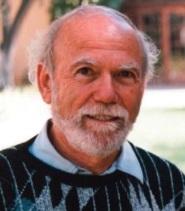Barry Barish asks how the particle-physics community can continue to foster its hallmark of fruitful international collaboration.
One of the things we do well in particle physics is collaborate with each other and internationally to carry out our science. Of course, individual and small collaborations are a trademark of modern scientific research and many of us have developed lifelong colleagues and friends from different cultures through our scientific interactions. Even during times when political situations have been constraining, scientific contacts have been maintained that have helped to break down those barriers. For example, during the heat of the Cold War, personal interactions were greatly hampered, yet scientific bonds persevered and some of those connections provided crucial ongoing contacts between Western and Soviet societies.

When I was a student at the University of California, Berkeley, I did my PhD research at the “Rad Lab”, now called Lawrence Berkeley National Laboratory. I recall being immediately surprised both by the number of foreign or foreign-born scientists at the lab and by how little it seemed to matter. For me, having grown up as a local Californian boy, this was an eye-opening experience and a terrific opportunity to learn about other cultures, customs and views of the world. After a while, I pretty much took it for granted that we scientists accept and relate to each other in ways that are essentially independent of our backgrounds. However, it is worth reminding ourselves that this is not the case in most of society and that we are the exception, not the rule.
I have often wondered what it is that unifies scientists. How can we work together so easily, when cultural, political and societal barriers inhibit that for most of society? After all, hostilities between countries and cultures seem to continue as an almost accepted part of our modern existence. I won’t theorize here on what enables scientists to work together and become colleagues and friends without regard to our backgrounds. Instead, I would like to briefly explore whether the nature of how we collaborate will, or should, change.
Particle physics is increasingly focused on the programmes at our big laboratories that house large accelerators, detectors and support facilities. These laboratories have essentially come to represent a distributed set of centres for high-energy physics, from which the intellectual and technical activities emanate and where physicists go to interact with their colleagues. Fermi National Accelerator Laboratory (Fermilab), Stanford Linear Accelerator Center (SLAC), the High Energy Accelerator Research Organization (KEK) and Deutsches Elektronen-Synchrotron (DESY) are examples of national laboratories that play this role in the US, Japan and Germany. CERN is a different example of a successful regional laboratory that has provided Europe with what is arguably the leading laboratory in the world for particle physics and with a meeting place for physicists from Europe and beyond.
One essential ingredient in the success of particle physics is that the accelerator facilities at the large laboratories have been made open to experimentalists worldwide without charge. This principle was espoused by the International Committee on Future Accelerators (ICFA) and, I believe, it has been crucial to widening participation.
It is interesting to contemplate how international collaboration might evolve as we go beyond the regional concept to a global one, like the International Linear Collider (ILC). The organizational principles for building and operating the ILC are not yet defined, but the idea is to form a partnership between Asian, American and European countries. Such an arrangement is already in place for the accelerator and detector R&D efforts. The general idea is to site the ILC near an existing host laboratory, to take advantage of the support facilities. However, the project itself will be under shared management by the international stakeholders. The experiments are expected to consist of large collider detectors similar to those at present colliders, but with some technical challenges that will require significant detector R&D over the next few years.
As we plan for the ILC, we want to ensure that we create a facility that will be available to the world scientific community. What needs to be done to ensure that we maintain the strong collaborative nature of our research and how do we create a true centre for the intellectual activities of our community? What should we require of the host country to assure openness to the laboratory and its facilities? How can we best include the broad community in the decision-making that will affect the facilities that are to be built? Is it time to consider new forms of detector collaboration and/or should we contemplate making the data from the detectors available to the broader community after an initial period (as in astronomy)?
I raise such questions only as examples, not to imply that we should change the way we do business, but to encourage us to think hard about how we can create an exciting international facility that will best serve our entire community and enable productive and broad collaboration to continue in science.





